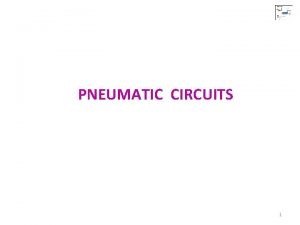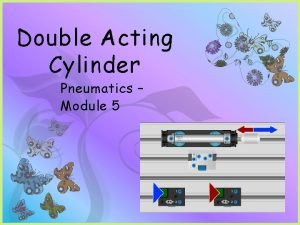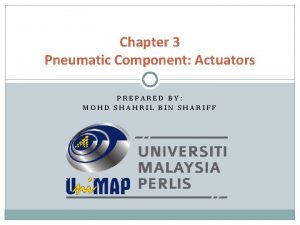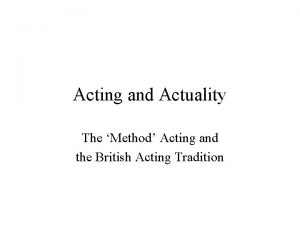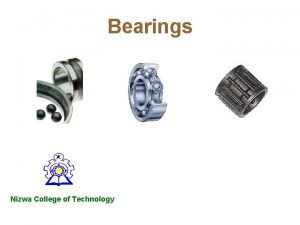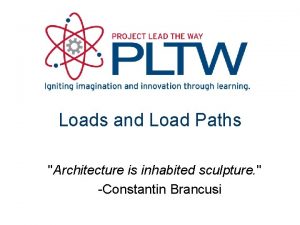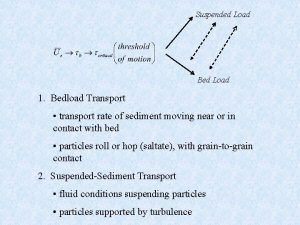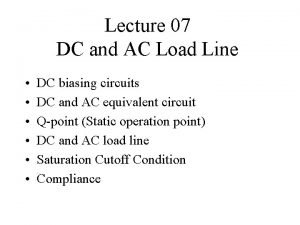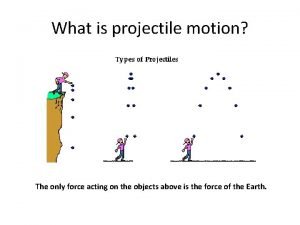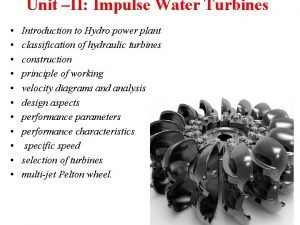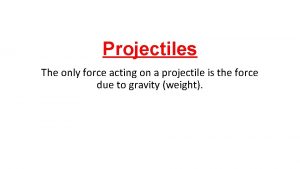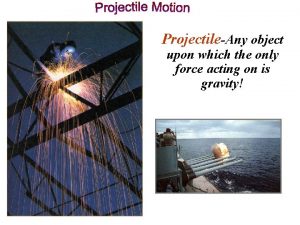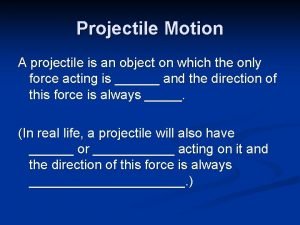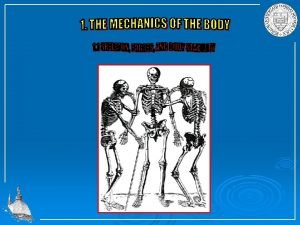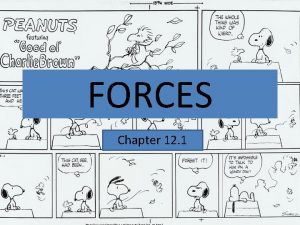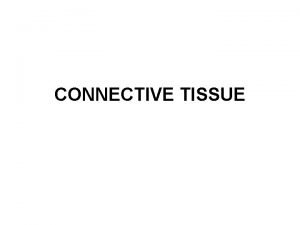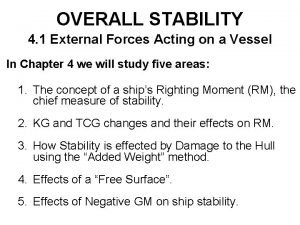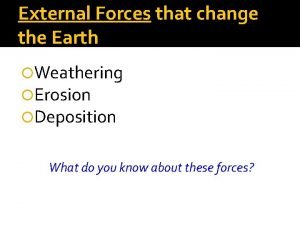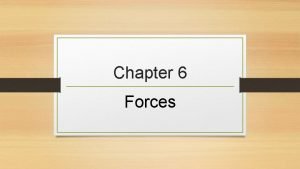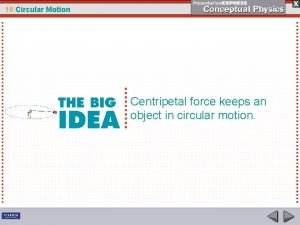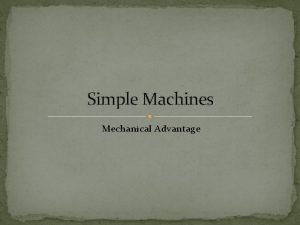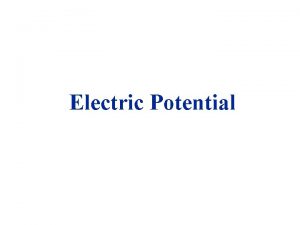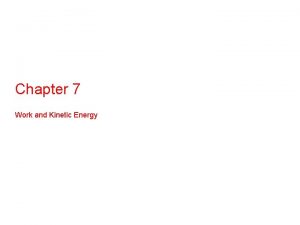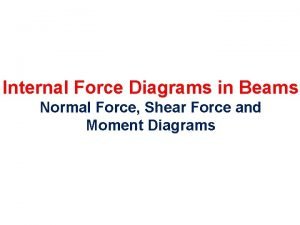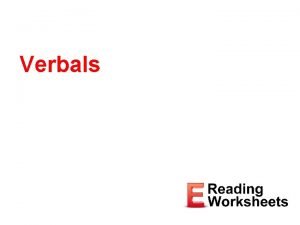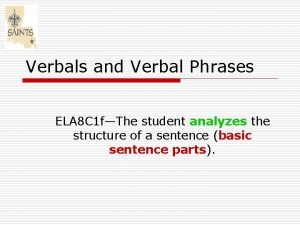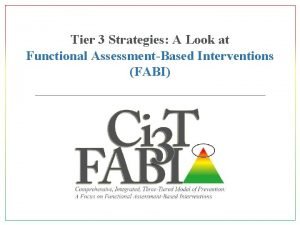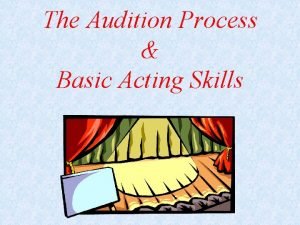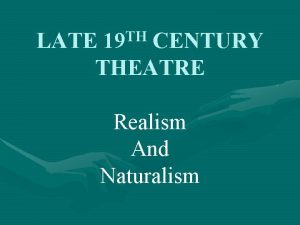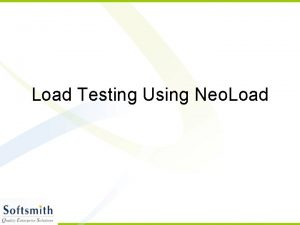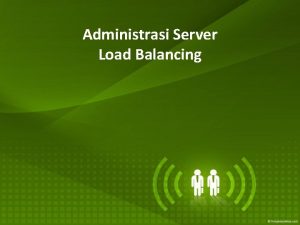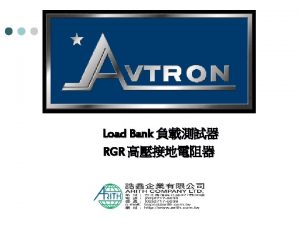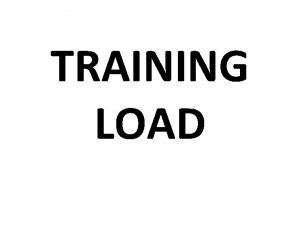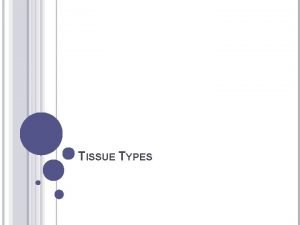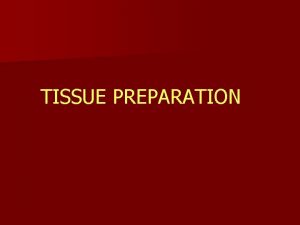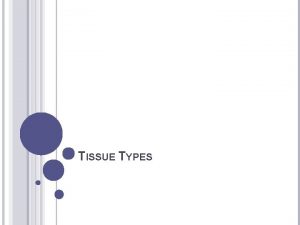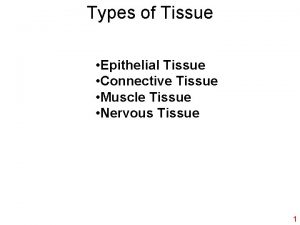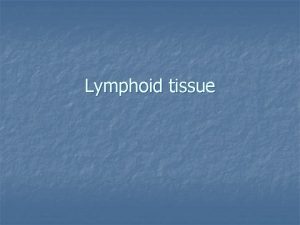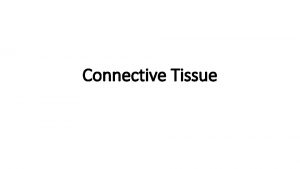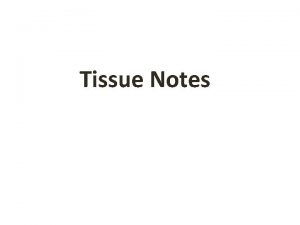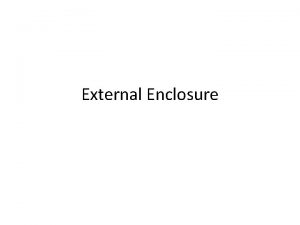Tissue Properties Load An external force acting on










































- Slides: 42

Tissue Properties Load An external force acting on the body causing internal reactions within the tissues Stiffness Ability of a tissue to resist a load Greater stiffness = greater magnitude load can resist Stress Internal resistance to a load Strain Internal change in tissue (i. e. length) resulting in deformation

Figure 9 -1

Body tissues are viscoelastic and contain both viscous and elastic properties Yield point Point at which elasticity is almost exceeded is the yield point If deformation persists, following release of load permanent or plastic changes result When yield point is far exceeded mechanical failure occurs resulting in damage

Tissue Loading Tension Force that pulls and stretches tissue Compression Force that results in tissue crush – two forces applied towards one another Shearing Figure 92 Force that moves across the parallel organization of tissue

Bending Two force pairs act at opposite ends of a structure (4 points) Three forces cause bending (3 points) Already bowed structures encounter axial loading Torsion Loads caused by twisting in opposite directions from opposite ends Shear stress encountered will be perpendicular and parallel to the loads Figure 92

Traumatic vs. Overuse Injuries Nature of physical activity dictates that over time injury will occur Debate over acute vs. chronic injuries When injury is acute – something has initiated the injury process Injury becomes chronic when it doesn’t properly heal Could define relative to mechanism Traumatic (i. e. a direct blow) vs. Overuse (i. e. repetitive dynamic use over time)

Musculotendinous Unit Injuries High incidence in athletics Anatomical Characteristics Composed of contractile cells that produce movement Possess following characteristics Irritability Contractility Conductivity Elasticity

Muscle Strains Stretch, Cause tear or rip to muscle or adjacent tissue is often obscure Abnormal muscle contraction is the result of 1)failure in reciprocal coordination of agonist and antagonist, 2) electrolyte imbalance due to profuse sweating or 3) strength imbalance May range from minute separation of connective tissue to complete tendinous avulsion or muscle rupture

Muscle Strain Grades Grade I - some fibers have been stretched or actually torn resulting in tenderness and pain on active ROM, movement painful but full range present Grade II - number of fibers have been torn and active contraction is painful, usually a depression or divot is palpable, some swelling and discoloration result Grade III- Complete rupture of muscle or musculotendinous junction, significant impairment, with initially a great deal of pain that diminishes due to nerve damage Pathologically, strain is very similar to contusion or sprain with capillary or blood vessel hemorrhage

Muscle Cramps Painful involuntary skeletal muscle contraction Occurs in well-developed individuals when muscle is in shortened position Experienced at night or at rest Muscle Guarding Following injury, muscles within an effected area contract to splint the area in an effort to minimize pain through limitation of motion Involuntary muscle contraction in response to pain following injury Not spasm which would indicate increased tone due to upper motor neuron lesion in the brain

Muscle A Spasms reflex reaction caused by trauma Two types Clonic - alternating involuntary muscular contractions and relaxations in quick succession Tonic May - rigid contraction that lasts a period of time lead to muscle or tendon injuries

Muscle Soreness Overexertion in strenuous exercise resulting in muscular pain Generally occurs following participation in activity that individual is unaccustomed Two types of soreness 1) 2) Acute-onset muscle soreness - accompanies fatigue, and is transient muscle pain experienced immediately after exercise Delayed-onset muscle soreness (DOMS) - pain that occurs 24 -48 hours following activity that gradually subsides (pain free 3 -4 days later) Potentially caused by slight microtrauma to muscle or connective tissue structures Prevent soreness through gradual build-up of intensity

Repetitive stress on tendon will result in microtrauma and elongation, causing fibroblasts influx and increased collagen production Repeated microtrauma may evolve into chronic muscle strain due to reabsorption of collagen fibers Results in weakening tendons Collagen reabsorption occurs in early period of sports conditioning and immobilization making tissue susceptibility to injury – requires gradual loading and conditioning

Tendinitis Gradual onset, with diffuse tenderness due to repeated microtrauma and degenerative changes Obvious signs of swelling and pain Key to treatment is rest May require substitution of activity in order to maintain fitness without stressing injured structure Without proper healing condition may begin to degenerate and be referred to as tendinosis Less inflammation, more visibly swollen with stiffness and restricted motion Treatment involves stretching and strengthening Becomes “osis” after ~6 weeks Figure 9 -5

Tenosynovitis Inflammation of synovial sheath In acute case - rapid onset, crepitus, and diffuse swelling Chronic cases result in thickening of tendon with pain and crepitus Often occurs in long flexor tendon of the digits and the biceps tendon

Myofascial Trigger Points Discrete, hypersensitive nodule within tight band of muscle or fascia Classified Develop as latent or active as the result of mechanical stress Either acute trauma or microtrauma May lead to development of stress on muscle fiber = formation of trigger points Latent Does trigger point not cause spontaneous pain May restrict movement or cause muscle weakness Become aware of presence when pressure is applied

Active trigger point Causes pain at rest Applying pressure = pain = jump sign Tender to palpation with referred pain Tender point vs. trigger point Found most commonly in muscles involved in postural support

Contusions Result of sudden blow to body Can be both deep and superficial Hematoma results from blood and lymph flow into surrounding tissue Localization of extravasated blood into clot, encapsulated by connective tissue Speed of healing dependent on the extent of damage Chronically inflamed and contused tissue may result in generation of calcium deposits (myositis ossificans) Prevention through protection of contused area with padding


Atrophy and Contracture Atrophy is wasting away of muscle due to immobilization, inactivity, or loss of nerve functioning Contracture is an abnormal shortening of muscle where there is a great deal of resistance to passive stretch Generally the result of a muscle injury which impacts the joint, resulting in accumulation of scar tissue

Synovial Joints Injuries Each joint has both hyaline or articular cartilage and a fibrous connective tissue capsule Additional synovial joint characteristics Capsule and ligaments for support Capsule is lined with synovial membrane Hyaline cartilage Joint cavity with synovial fluid Blood and nerve supply with muscles crossing joint Menisci (fibrocartilage)


Sprains Result of traumatic joint twist that causes stretching or tearing of ligament Graded based on the severity of injury Grade I - some pain, minimal loss of function, no abnormal motion, and mild point tenderness Grade II - pain, moderate loss of function, swelling, and instability with tearing and separation of ligament fibers Grade III - extremely painful, inevitable loss of function, severe instability and swelling, and may also represent subluxation

Can result in joint effusion and swelling, local temperature increase, pain and point tenderness, ecchymosis (change in skin color) and possibly an avulsion fracture Greatest difficulty with grade 1 & 2 sprains is restoring stability due to stretched tissue and inelastic scar tissue which forms To regain joint stability strengthening of muscles around the joint is critical

Dislocations Result and Subluxations in separation of bony articulating surfaces Subluxation Partial dislocations causing incomplete separation of two bones Bones come back together in alignment Dislocations High level of incidence in fingers and shoulder Occurs when at least one bone in a joint is forced out of alignment and must be manually or surgically reduced Gross deformity is typically apparent with bilateral comparison revealing asymmetry

Dislocation Stabilizing (cont. ) structures of the joint are disrupted Joint often becomes susceptible to subsequent dislocations X-ray is the only absolute diagnostic technique (able to see bone fragments from possible avulsion fractures, disruption of growth plates or connective tissue) Dislocations (particularly first time) should always be considered and treated as a fracture until ruled out “Once a dislocation, always a dislocation” Figure 9 -9

Osteoarthritis Wearing away of hyaline cartilage as a result of normal use Changes in joint mechanics lead to joint degeneration Commonly affects weight bearing joints but can also impact shoulders and cervical spine Symptoms include pain (as the result of friction), stiffness, prominent morning pain, localized tenderness, creaking, grating Either generalized joint pain or localized to one side of the joint Figure 9 -10

Bursitis Bursa are fluid filled sacs that develop in areas of friction Sudden irritation cause acute bursitis, while overuse and constant external compression cause chronic bursitis Signs and symptoms include swelling, pain, and some loss of function Repeated trauma can lead to calcification and degeneration of internal bursa linings Figure 9 -11

Capsulitis and Synovitis Capsulitis is the result of repeated joint trauma Synovitis can occur acutely but will also develop following mistreatment of joint injury Chronic synovitis can result in edema, thickening of the synovial lining, exudation can occur and a fibrous underlying develops Motion may become restricted and joint noises may develop

Bone Fractures Classified as either closed or open Closed fractures are those where there is little movement or displacement Open fractures involve displacement of the fractured ends and breaking through the surrounding tissue Serious Signs condition if not managed properly & symptoms Deformity, pain, point tenderness, swelling, pain on active and passive movements Possible X-ray crepitus will be necessary for definitive diagnosis

Mechanism of Injury Fracture may be direct (at point of force application) or indirect Sudden violent and forceful muscle contraction Types of fractures Greenstick Comminuted Linear Transverse Oblique Spiral Impacted Figure 9 -13

Types (cont. ) Avulsion Separation of bone fragment from cortex via pull of ligament or tendon Blowout fracture Serrated fracture Depressed fracture Contrecoup fracture

Bone Strength & Shape Strength of bone can be impacted by changes in shape and direction Long bones with gradual changes are less prone to injury Cylindrical and hollow nature of bones make them very strong - resistant to bending and twisting Bone Loading Characteristics Bones can be stressed or loaded to failure by tension, compression, bending, twisting and shearing

Long Bone Load Characteristics (cont. ) Either occur singularly or in combination Amount of load also impacts the nature of the fracture More force results in a more complex fracture While force goes into fracturing the bone, some energy and force is also absorbed by adjacent soft tissues Bone has elastic properties allowing it to bend Typically brittle and a poor shock absorber Brittleness increases under tension forces, more so than under compression

Stress fractures No specific cause but with a number of possible causes Overload due to muscle contraction, altered stress distribution due to muscle fatigue, changes in surface, rhythmic repetitive stress vibrations Bone becomes susceptible early in training due to increased muscular forces and initial remodeling and resorption of bone Progression involves, focal microfractures, periosteal or endosteal response (stress fx) linear fractures and displaced fractures Early detection is difficult, bone scan is useful, xray is effective after several weeks

Typical causes include Coming back to competition too soon after injury Changing Starting initial training too quickly Changing Variety Signs events without proper conditioning training habits (surfaces, shoes…. etc) of postural and foot conditions and symptoms Focal tenderness and pain, (early stages) Pain with activity, (later stages) with pain becoming constant and more intense, particularly at night, (exhibit a positive percussion tap test) Common sites involve tibia, fibula, metatarsal shaft, calcaneus, femur, pars interarticularis, ribs, and humerus Management varies between individuals, injury site and extent of injury

Epiphyseal Occur Conditions most often in children ages 10 -16 years old Classified by Salter-Harris into five types Apophyseal Young Injuries physically active individuals are susceptible Apophyses are traction epiphyses in contrast to pressure epiphyses. Serve as sites of origin and insertion for muscles Common avulsion conditions include Sever’s disease and Osgood-Schlatter’s disease


Osteochondrosis Also known as osteochondritis dissecans and apophysitis (if located at a tubercle/tuberosity) Causes not well understood Degenerative changes to epiphyses of bone during rapid child growth Possible cause includes 1)aseptic necrosis (disrupted circulation to epiphysis, 2) fractures in cartilage causing fissures to subchondral bone, 3) trauma to a joint that results in cartilage fragmentation resulting in swelling, pain and locking With the apophysis, an avulsion fracture may be involved, including pain, swelling and disability

Nerve Trauma Abnormal nerve responses can be attributed to injury or athletic participation The most frequent injury is neuropraxia produced by direct trauma Lacerations of nerves as well as compression of nerves as a result of fractures and dislocations can impact nerve function

Nerve Injuries Compression and tension are primary mechanisms May be acute or chronic Physical trauma causes pain and can result in a host of sensory responses (pinch, burn, tingle, muscle weakness, radiating pain) Long term problems can go from minor nerve problems to paralysis Pain can be referred as well

Neuropraxia Interruption Brought Impact about via compression, or tension motor more than sensory function Temporary in conduction through nerve fiber loss of function (sec. -> minutes) Axonotmesis More severe disruption of the axon but surrounding tissue remains in tact Impacts motor and sensory Minutes -> days Neurotmesis Complete Days disruption of the nerve -> years (if at all)
 Single acting cylinder diagram
Single acting cylinder diagram State two application of double acting cylinder
State two application of double acting cylinder Difference between single acting and double acting
Difference between single acting and double acting Pantomimish
Pantomimish Bearing
Bearing Load paths
Load paths Pux
Pux The point of intersection of dc and ac load line
The point of intersection of dc and ac load line Perforation plates
Perforation plates The only force acting in a vertical projectile motion is
The only force acting in a vertical projectile motion is Difference between reaction turbine and impulse turbine
Difference between reaction turbine and impulse turbine The only force acting in a horizontal projectile motion is
The only force acting in a horizontal projectile motion is An object upon which the only force acting is gravity
An object upon which the only force acting is gravity The only force acting on a projectile
The only force acting on a projectile What is the buoyant force acting on the block?
What is the buoyant force acting on the block? The main force acting on the body is the
The main force acting on the body is the Net force
Net force External-external trips
External-external trips Properties of connective tissue
Properties of connective tissue Range of stability of ship
Range of stability of ship Internal vs external forces
Internal vs external forces Weathering is an example of an external force of change.
Weathering is an example of an external force of change. Extensive examples
Extensive examples Physical properties of ice cube
Physical properties of ice cube Tension contact or noncontact
Tension contact or noncontact Vt=2pir/t
Vt=2pir/t Long range force vs contact force
Long range force vs contact force What force provides centripetal force
What force provides centripetal force How does mechanical advantage work
How does mechanical advantage work What is net force
What is net force Centripetal force culture
Centripetal force culture What is force
What is force Is electric potential conservative
Is electric potential conservative Centripetal force and gravitational force
Centripetal force and gravitational force Hooke's law vector form
Hooke's law vector form Draw the shear and moment diagrams
Draw the shear and moment diagrams Acting
Acting Verb acting as an adjective
Verb acting as an adjective Elliptical clause
Elliptical clause Acting out cycle
Acting out cycle V-effect brecht
V-effect brecht Basic acting skills
Basic acting skills Naturalism in acting
Naturalism in acting
